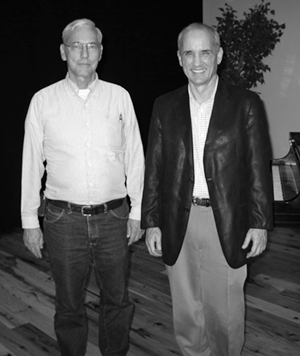 Steve Van Zandt, now an Idaho resident, was the principal plaintiff in Van Zandt v. Thompson, in which he and FFRF sued Illinois Gov. James Thompson for implementing a state House resolution passed in 1985.
Steve Van Zandt, now an Idaho resident, was the principal plaintiff in Van Zandt v. Thompson, in which he and FFRF sued Illinois Gov. James Thompson for implementing a state House resolution passed in 1985.
The resolution authorized a “prayer room” in the State Capitol as a place for “prayer and meditation, primarily for the use of the members of the General Assembly.” It was pursued at the instigation of Rev. Marion (Pat) Robertson. The resolution stated its purpose was to have “a quiet and special place, where its members may see God, the comfort of His presence, the light of His guidance, and the strength of His love.”
Federal District Judge Marvin Aspen ruled for the plaintiffs in declaring the prayer room was an unconstitutional endorsement of religion. In his 1987 decision he wrote, “The repeated, candid religious references in the body of the resolution signal the legislature’s abandonment of any pretensions of neutrality as between religion and nonreligion. From the face of the statute, we can only conclude that the purpose of the legislature in passing HR 408 was to endorse a religious presence in the Capitol.”
Aspen said the resolution conveyed a message to citizens that “[The state] endorses prayer and the practice of particular religions in the Capitol. . . . Prayer is an inherently religious act. . . . Government action which extends beyond mere facilitation of religious practice and resultingly favors one type of practice over another or all practices over none goes beyond the concept of accommodation and represents hostility to the members of the unfavored group.”
Aspen added, “Whether or not to believe is a personal decision. The Establishment Clause was crafted to protect freedom of choice by preventing the government from making that choice for individual citizens. . . . Perhaps nowhere is it more important for the government to preserve the face of neutrality toward any particular religion or toward all religions than in the halls of its legislature.”
When the state appealed, the 7th Circuit reversed Aspen’s ruling in 1988. But the good news is that the chapel is described as a meditation room and seems never to have been used for worship.

